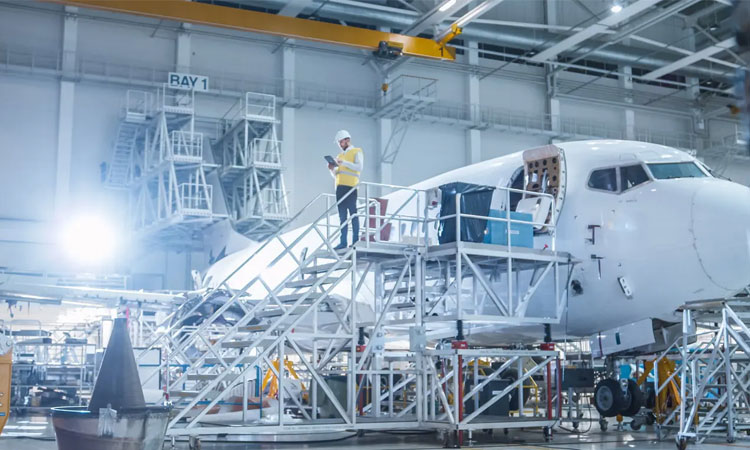Find The Best Aerospace Manufacturing Software

The aerospace manufacturing industry demands precision, efficiency, and top-notch quality to ensure the safety and performance of aerospace products. To meet these demands, aerospace companies are turning to innovative software solutions that can streamline operations, optimize processes, and enhance overall efficiency. In this comprehensive guide, we will delve into the world of aerospace manufacturing software, exploring its benefits, and features, and how to choose the best solution for your needs.
Introduction
In the fast-paced world of aerospace manufacturing, where accuracy and reliability are paramount, finding the right software can make a significant difference. Aerospace ERP software is designed to address the unique challenges faced by this industry, such as complex assembly processes, stringent regulatory requirements, and the need for precise documentation. These software solutions aim to enhance efficiency, reduce errors, and enable seamless collaboration across various departments.
Aerospace Manufacturing Software: A Step-by-Step Guide
Understanding the Role of Aerospace Manufacturing Software
Aerospace software encompasses a range of tools that assist in various stages of the production process, from design and simulation to production planning and quality control. It includes Computer-Aided Design (CAD) software, Computer-Aided Manufacturing (CAM) software, Product Lifecycle Management (PLM) systems, and more. These tools work in tandem to streamline operations and ensure the highest quality standards.
Key Features to Look For
When searching for the best aerospace manufacturing software, keep an eye out for essential features such as:
- Advanced CAD Capabilities: Look for software with robust 3D modeling and simulation capabilities to visualize and optimize complex aerospace components.
- CAM Integration: Seamless integration between CAD and CAM software ensures a smooth transition from design to manufacturing, reducing errors and saving time.
- Materials Management: The software should offer comprehensive materials tracking and management features, crucial for ensuring compliance and traceability.
- Quality Control and Compliance: Choose software that helps maintain strict quality standards and regulatory compliance throughout the manufacturing process.
Benefits of Aerospace Manufacturing Software
Implementing the right software solution can yield numerous benefits, including:
- Enhanced Efficiency: Aerospace software streamlines processes, reduces manual interventions, and minimizes production bottlenecks.
- Improved Collaboration: With centralized data and real-time communication tools, teams can collaborate effectively, leading to quicker decision-making.
- Reduced Errors: Automation and simulation features help catch design flaws and manufacturing errors before they become costly issues.
- Cost Savings: By optimizing processes and minimizing waste, aerospace software contributes to significant cost savings over time.
Selecting the Perfect Solution
Choosing the best aerospace manufacturing software requires a careful evaluation of your company’s specific needs and goals. Consider factors such as:
- Scalability: Ensure the software can accommodate your current needs and future growth.
- User-Friendly Interface: The software should be intuitive and user-friendly to facilitate quick adoption by your team.
- Integration Capabilities: Look for software that can seamlessly integrate with existing systems and tools.
- Customer Support: A responsive and knowledgeable customer support team is essential for troubleshooting and assistance.
Top Aerospace Manufacturing Software Solutions

Explore some of the leading aerospace software solutions available today, including:
- Siemens NX: Known for its comprehensive suite of tools for aerospace design, simulation, and manufacturing.
- Dassault Systèmes CATIA: Offers powerful CAD and PLM capabilities tailored for the aerospace industry.
- Autodesk Fusion 360: Combines CAD, CAM, and CAE tools in a single platform for streamlined aerospace manufacturing.
Real-World Success Stories
Learn from the experiences of aerospace companies that have successfully implemented manufacturing software. Companies like Boeing and Airbus have integrated advanced software solutions to streamline their production processes, leading to improved efficiency and quality.
Conclusion
In the competitive landscape of aerospace manufacturing, finding the best software is akin to gaining a competitive edge. The right software can transform operations, boost efficiency, and elevate product quality to unprecedented levels. By exploring the wide range of aerospace software solutions available, understanding their benefits, and carefully selecting the one that aligns with your company’s needs, you can set your aerospace business on a trajectory of success.
FAQs
Q: What role does simulation play in aerospace software?
A: Simulation allows engineers to virtually test designs and manufacturing processes, identifying potential issues before physical production begins.
Q: Can aerospace software assist in regulatory compliance?
A: Yes, these software solutions often include features that help maintain compliance with industry regulations and standards.
Q: Is cloud-based software suitable for aerospace manufacturing?
A: Cloud-based solutions offer flexibility and collaboration, but security measures must be carefully considered due to sensitive aerospace data.
Q: How does aerospace manufacturing software contribute to sustainability?
A: By optimizing processes and reducing waste, these software solutions support sustainable manufacturing practices.
Q: What are the challenges of implementing aerospace software?
A: Challenges may include initial training, data migration, and ensuring compatibility with existing systems.
Q: Can small aerospace companies benefit from manufacturing software?
A: Absolutely, software solutions can be scaled to fit the needs of both large manufacturers and smaller aerospace businesses.





